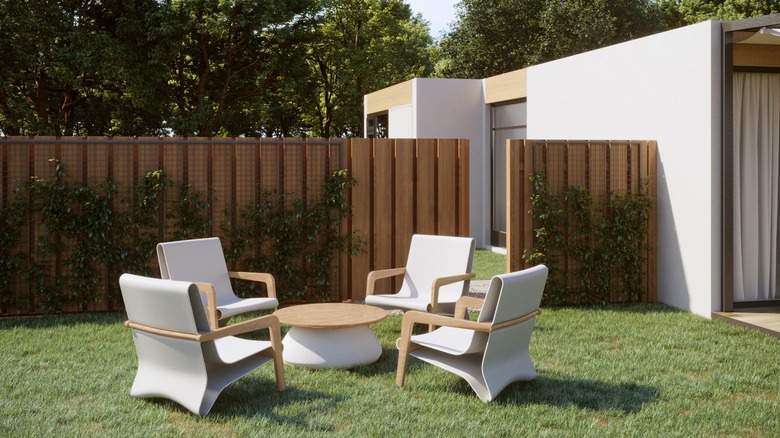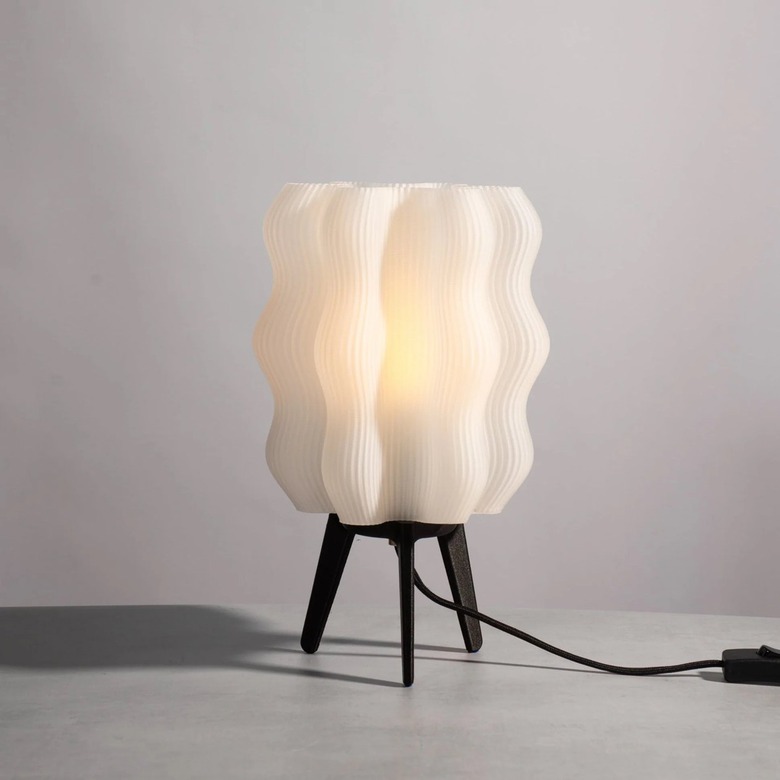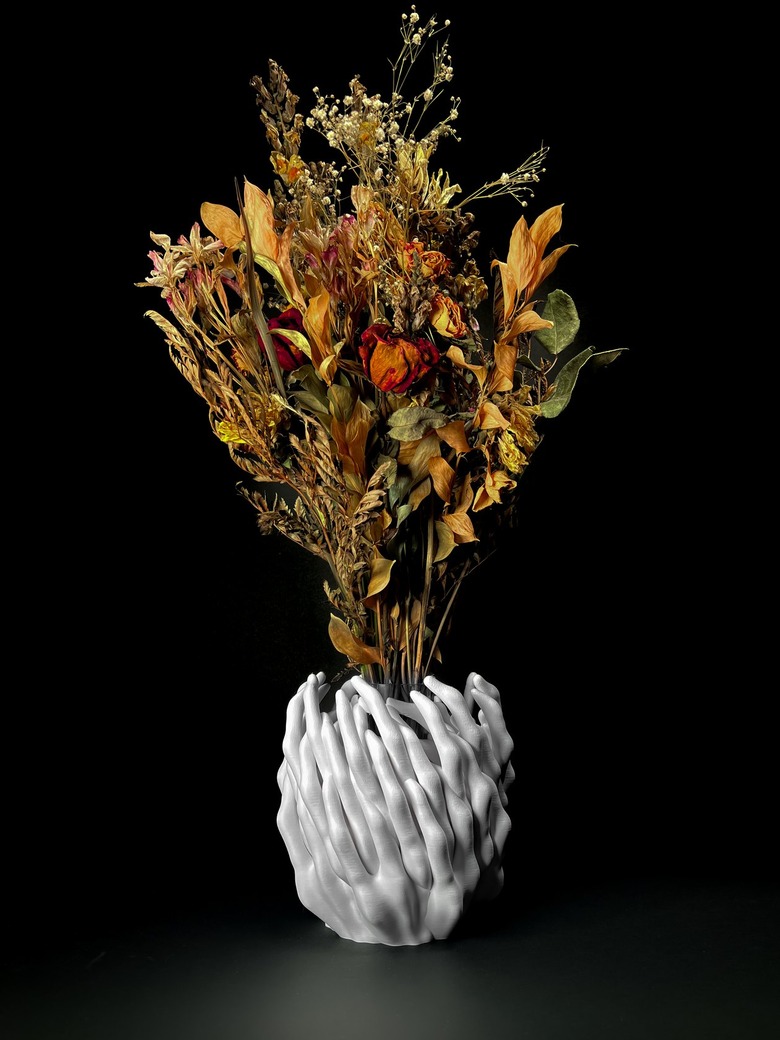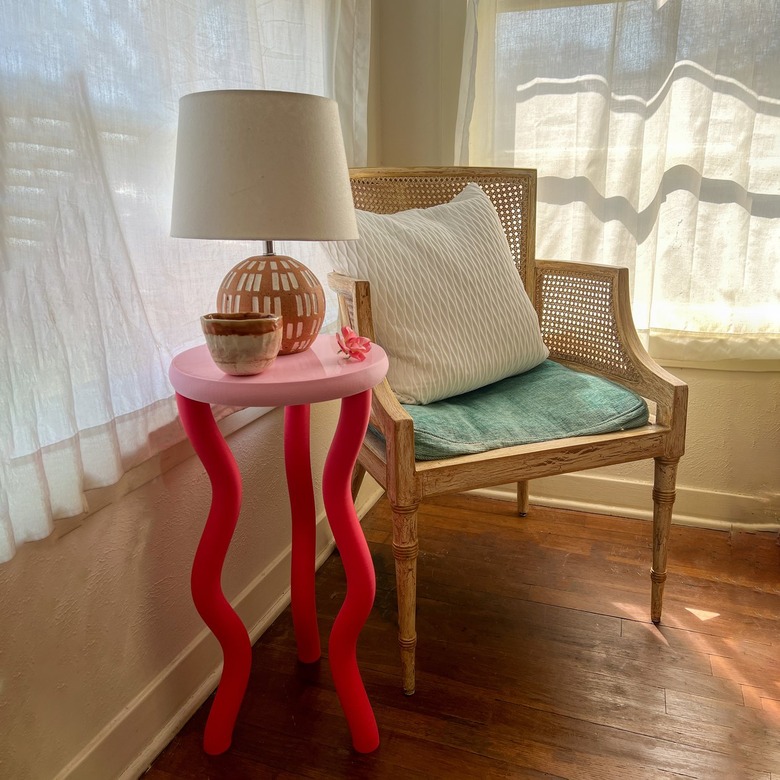3D-Printed Objects Are Taking Over The Home Interior Space
This past January, IKEA Germany introduced Flamträd, a new collection of on-demand, 3D-printed home goods. A deviation from the brand's traditional flat-packed furniture and home accessories, the series features intricate lattice designs of posed hands and heads that can be mounted on the wall or arranged on a desk. The collection marks the brand's continued experimentation with 3D printing, which started with the 2020 collection Uppkoppla, a collaboration with the design company UNYQ on customizable gaming accessories.
Though it does feel novel, 3D printing in the furniture industry is not a new phenomenon. As Financial Times reported in 2013, the technology has been used by designers to create prototypes and concept models for over 30 years. What's different now is that, as the technology advances from a supplementary feature to a legitimate trade, companies are turning to 3D printers to manufacture finished products rather than mock-ups. And as 3D printing machines evolve, companies are able to make bigger objects.
"The industry is recognizing the full potential of 3D printing for actual production," Jeffrey McGrew, co-founder and CTO of Model No., a sustainable furniture brand, tells Hunker.
IKEA's forays into 3D printing hint at the changes trickling into the furniture industry, as mainstream retailers begin to consider the benefits of this emerging technology. And according to 3D printing market forecaster SmarTech Analysis, the industry is here to stay. In 2021, the line of business grew by 18% year over year and is expected to reach $50.8 billion in revenue by 2030. While the traditional furniture industry plays catch-up, other businesses have been exploring the possibilities of 3D printing and digital fabrication for years.
From chairs to lamps, sofas, and tables, companies like Model No., Gantri, and Wooj offer functional home decor that stands out aesthetically while also being gentle on the planet. Not only does 3D printing allow for more creative freedom when it comes to the designs, it also boasts numerous eco-friendly benefits. As opposed to mass-manufactured items, Model No. and other 3D printing companies make products on demand, lessening the overall waste that is usually generated during the manufacturing process. Moreover, because less resources are spent on manufacturing and transporting goods, 3D printing helps lower brands' carbon footprints.
Most 3D-printed pieces are also made with a material known as PLA (polylactic acid or polylactide), a bioplastic derived from plants like corn starch or sugar cane. However, though most 3D printing companies describe PLA as compostable and recyclable, there is still more research to be done.
"We're not shipping things around as much and also we're not over-producing as much," says McGrew.
Established in 2018, Model No. creates simple, made-to-order furniture and accessories at its micro-factory in Oakland, California. McGrew lists a slew of reasons for the brand's interest in 3D printing. Beyond the sustainability benefits, he says, the technology allows for an exciting degree of customizability, which gives designers and customers access to unique products they haven't seen before. Still, most of Model No.'s products — from chic credenzas to sleek ergonomic chairs — combine PLA with sustainable wood.
"When we were 3D printing whole chairs, people thought it was interesting, but they didn't respond to it as much," McGrew explains. "By mixing in other traditional materials like wood, even though it's all being done in the same kind of digital fabrication way, we actually get a lot more traction with people because they still want it to look like [traditional] furniture."
Other brands lean into the unique aesthetics offered by 3D printers. Wooj's Wavy Lamp, which resembles the undulating waves of the ocean, made a splash on social media this past year, becoming a fixture on Instagram. And it's not the first time 3D-printed furniture has created a frenzy.
Greg Cerna, a software engineer turned 3D printing artist, launched his company Printerror, in 2015. Two years earlier, Cerna bought his first 3D printer while studying electrical engineering and computer science in college. Figuring out the printer became a fun hobby. He describes the 3D printing community at that time as a "Wild West," and he was fascinated by the seemingly limitless possibilities of the technology. He began making numerous prints and would give them away to friends, who then encouraged him to sell his goods online.
After taking a break following the initial launch, Cerna resurrected Printerror as a full-time business in 2019. His designs explore "pattern and ornament," he says, and play with repetition. The Polyface Planter is the company's bestseller, a swirl of nine faces that call to mind a trippy Grecian statue. The planter became a sensation (clones are everywhere, including Amazon) and appeared in an Etsy commercial for gift ideas in 2020.
Cerna runs his company with Asher Ford in Austin, Texas. Ford is the mind behind Object Lover, a 3D-printed design shop and sister company to Printerror. In contrast to Cerna's interest in monochrome, Object Lover is "oriented around solid forms of color that intersect in interesting ways," Ford tells Hunker. Her bright designs include jellyfish-inspired side tables and fruity coasters, with color options like strawberry lemonade and plum purple.
Ford met Cerna in 2019, and the two have been working together ever since. "We have a philosophy that people really can learn almost anything. When I got here, I never built a shelf and did not understand how a screw worked, and now I can legitimately build a 3D printer," Ford says. The two designers are big fans of the Prusa MK3 3D printer. "We love the Prusa, and we want more people to have them and use them," Ford explains. "Greg found one years ago and smartly built around it. It's a lifesaver that enables us to do a lot of things we couldn't do otherwise."
When thinking about the future of 3D printing in the home decor space, most hope that the technology pushes both small and large companies to reimagine their approach to manufacturing, labor, and design.
McGrew shares that Model No. has its sights set on expanding into the commercial space. "We're working on a new line of office furniture," he says. "We're prototyping items like conference tables, work desks, power distributions, things that a mid- to large-size company might buy for their business." Since the pandemic, people want different work environments, McGrew notes, and 3D printing can help fill that desire.
Cerna, who recalls the early ethos of the 3D printing community as typified by the RepRap project — the first low-cost 3D printer that can actually print most of its own parts — hopes that a sense of openness and sharing is able to continue, because that is how the industry evolves for the better.
"This equity has always been in the 3D printing world for a long time," Cerna says, "and I think that as time goes on, keeping that alive — and not just alive, but thriving — is really important."




